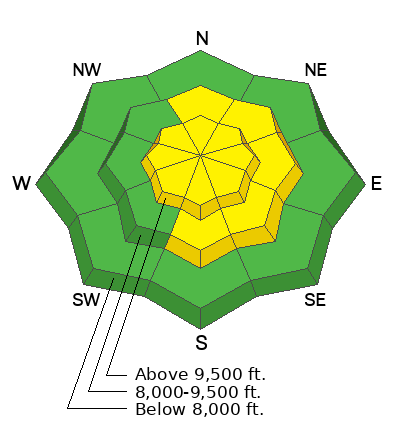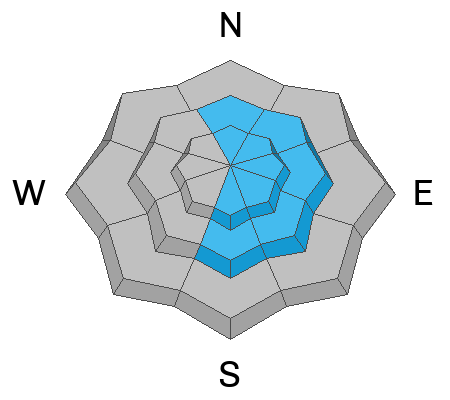Join the Utah Avalanche Center and the Division of Outdoor Recreation to celebrate the Fourth Annual Avalanche Awareness week, from December 4 - December 11. Click
HERE to view the full list of events for the week.
Skies are overcast ahead of the first in a series of storm systems for the Wasatch.
Mountain temperatures are in the mid to upper-20s. Winds are out of the west-southwest, blowing 25mph with gusts to 35. The highest elevations have hourly averages of 30mph with gusts to 40.
A cold Pacific storm is on the doorstep and we'll see light snowfall through much of the day. Snowfall intensity will spike during and just after the arrival of the cold front, estimated to arrive during the afternoon commute. Winds will veer to the west northwest and be gusty for a few hours into the evening. By early evening, favored locations could see upwards of 3-6", with snowfall continuing through the night and into Tuesday. Lake effect is possible, with the flow favoring areas north of I-80. By later Tuesday, the Provo mountains should see storm totals of 4-8" or more, with temperatures plummeting to the single digits and low teens.
A warming trend follows for mid-week with the next storm slated for Thursday evening.
Provo snow depths are 1-2' and travel is relatively easy for this time of year. Wind and sun damage exist in the upper elevations and the solar aspects, respectively; this storm will be a nice refresher.
From Ogden to the central Wasatch to the Provo mountains, we have received several excellent observations. You can find them
HERE. Please keep these reports coming.









